The Incredible Konkan Railway Story
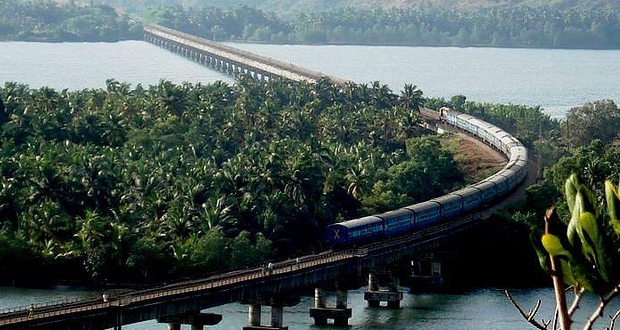
The Konkan Railway is an epic undertaking unparalleled in the history of India, undoubtedly the most expansive and biggest infrastructure project the country has undertaken (and completed) since independence. The Konkan Railway effectively connected the western coast of India with the rest of the country, primarily Mangalore and the rest of the Konkan or Karavalli Coastal regions of Karnataka, Goa and Maharashtra with Mumbai and secondarily the entire state of Kerala with Mumbai and beyond to Gujarat, Rajasthan, Delhi etc a point-to-point straight line. The Konkan Railway spans 738 kilometers through the states of Maharashtra, Goa and Karnataka, its end points being just after Roha railway station (75 km south of Panvel in the suburbs of Mumbai) in Maharashtra and just after Thokur railway station in southern Karnataka, just before Mangalore at the junction with Southern Railway’s line from the Panambur yard. It passes through some of the greatest scenic spots in this part of the World.
Volumes have already been written about the Konkan Railway and the stunning, undulating and breath-taking scenic beauty it offers to travelers all along the way. It must rank among one of those “must-see-places-before-you-die” along with such natural wonders as the Southern coast of Spain, the Bahamas, the Amazon rain forests, the Fjords of Norway, the Alps of Switzerland, the Mediterranean and so on. The western coast of India is rich in scenic beauty from Kanyakumari in the south, the entire state of Kerala, the spellbinding Karavalli coastlines of Karnataka which include spots like Gokarna and Maravanthe, the entire state of Goa whose natural abundance is already well-known and the ruggedly beautiful coasts of Maharashtra. The coast is wedged between the Arabian sea and the majestic Western Ghats which immediately rise after the coast, trapping the South West Monsoon, forcing it to pound the coast every year. The incomparable natural beauty of the coast can be attributed to this.
Background
The Konkan Railway (KR) was the last missing link for a complete Indian Railway map. Before KR, there was no railway line on half of India’s western coast and this stood out like a gaping hole on India’s railway map. Our railway lines metaphorically act as beams and pillars of support holding the country together and the absence of a railway line on the Western coast appeared as a missing a line of support or reinforcement on the left flank of the Peninsula. And more practically, there was no sensible means of connectivity between the two port cities of Mangalore and Mumbai which lie on the same coast! However, Goa was connected by a railway line since as far back as 1886, when the British built a line from Vasco (to serve the Mormugao port) inland crossing the tough Braganza Ghats via Dudhsagar Falls to connect to the then M&SM Railway’s Hubli – Poona line at Londa, another marvelous engineering feat nonetheless. This line is today operated by South Western Railway and runs parallel to the Konkan Railway for a short distance between Madgaon and Majorda.
People who wanted to go from Mangalore or Kerala to Goa, Mumbai or beyond to Gujarat those days were forced to go on a circuitous South India darshan via the Salem-Bangalore-(Dharwad-Belgaum)/(Gulbarga-Solapur)-Pune or Salem-Jolarpettai-Tirupati-Raichur-Daund-Pune rail routes ending up traveling 2200 km and spending 3-4 days in place of 930 km and 17 hours today via the Konkan Railway. It sounds comical, but those days people had to go from Mangalore to Mumbai via Chennai! Another option was to get to Birur, Kadur, Arsikere, Mysore or even Bangalore from Mangalore by (almost non-existent) road through the Malnad jungle and then board a train from there to Mumbai. If you are thinking “Why didn’t they take the road?”, there were no roads then either. The (pathetic) NH-17 (NH-66) which runs along the west coast from Ernakulam to Panvel, also known as the Mumbai – Goa road on that stretch and carries all the traffic of the west coast was built only during the mid 1970s. A continuous motorable road simply did not exist before that. So how did people from Mangalore get to Mumbai? Yes, by ship! Connectivity was even worse for people further up the coast.
History of the Konkan Railway
The history of the Konkan Railway goes as back as 1907 when railway lines reached Mangalore as the terminus of the main line from Madras via Shoranur. The idea of extending the line along the Konkan coast to Bombay was of course examined by the British, but they disregarded it as “impossible to construct” given the undulating, rugged, violent and unpredictable terrain of the region. In addition there weren’t any important ports along the route, the area was sparsely populated and they would encounter diplomatic difficulties as the line would have to pass through the then (hostile) Portuguese enclave of Goa. The idea was mooted by many since then but always put in the cold storage, though everyone knew that the line would have to be constructed eventually. After independence and as Mumbai grew, a line was laid from Diva to Panvel in 1964 and later extended south to Apta in 1966. In 1964 itself, seeing the potential for a line south of Apta, the then railway minister Sri Panampilli Govinda Menon suggested the idea of extending it southwards for a “western coastal railway”. His suggestion was largely ignored then but not forgotten. Demands for a West Coast line was also continuously raised by Barrister Nath Pai MP, parliamentarian and freedom fighter who hailed form Vengurla on the southern end of the Maharashtra Konkan, who actively voiced the concerns of the region. The project is thought to be his brainchild.
The idea was revived by Prof. Madhu Dantavate when he became Railway Minister in 1977. In 1984, 20 years after the line reached Apta, Prof. Dantavate sanctioned a line from Apta to Roha (opened in 1986) which would later become the starting point for the Konkan Railway, though that was not the intention then. As pressure built up, Indian Railways decided to build a line from Mangalore to Madgaon, the “easier” stretch. Southern Railway (SR) was entrusted to carry out an in-depth survey for this and in March 1985, it was decided to extend the line for the entire stretch of the West Coast till Roha where it would connect to the existing line to Mumbai. The final survey report was completed in 1988 and SR called it the “Konkan Railway” for the first time. The project finally got legs when Mr.George Fernandes became RM in 1989. Hailing from Udupi on the Konkan Coast, he had a passionate desire to see the project through and had a fairly good idea about what he faced. As the project needed heavy funding and the route was of national importance, it was decided to establish an independent company for the construction and management of the new line outside the scope of the Indian Railways. Konkan Railway Corporation Ltd. was hence founded in 1990 with E.Sreedharan as CMD. History was to be made in 8 years. Work started from both ends at the same time.
Building the Konkan Railway
Sreedharan & Co. must have gotten the jitters when it became clear to them what was the kind of terrain they were dealing with. The geography was extremely tough and unforgiving with steep cliffs, deep gorges, uneven grassy and rocky plateaus, swampy marshes, thick jungle, broad rivers, wet hills and so on, especially in Maharashtra where the Western Ghats reach directly to the sea. The geography changed every few kilometers and the builders had to cut through hard volcanic rock, soft and wet clay, tropical jungle and loose sand. Adding to this was the wild fury nature unleashed every now and then with violent monsoons and tropical thunderstorms causing cave-ins, landslides, flash floods and what not. Tunnel cave-ins, water gushes, hill collapses and many more disasters marred the construction
The line was to be designed to enable trains to run at 160 kph, which meant the track should be as level as possible with gradients (inclines) and curves kept to a minimum for trains to maintain speed. The only way for this to be achieved was to build the line straight through, despite the undulating nature of the terrain. This would mean constructing a lot of bridges, tunnels and embankments, and rock and earth to be cut down (like this) to allow the track to maintain its level run. 91 tunnels were dug, the longest at 5.6 kilometers. All the rivers and streams resulted in 2000 bridges. Tunnel digging equipment was imported from Sweden to dig many of these tunnels. But the real challenge were nine tunnels which had to be dug through wet, soft and loose clayey soil, which the equipment could not tackle and had to be painstakingly dug by hand, meter by meter. Some of these tunnels would cave in as soon as they were dug and had to be dug all over again. Work had to be entirely stopped on many occasions due to violent monsoons and the alignment was changed numerous times. Many were injured and 10 people lost their lives building the Konkan Railway! The unflappable team pushed forward without losing heart even when faced with criticism and skepticism from all around. Work would continue day and night with efficiency reminding those of the British times and the entire stretch, tunnels and all was ready in phases from 1993 to 1998, in just 8 years after work had begun! What a triumph!
Train Services on Konkan Railways
As expected, the first stretch to be completed was the Thokur – Udupi stretch in the south on March 1993, followed by the Roha – Veer stretch in the north on June 1993. Incidentally, both these stretches were 47 km long! The first train to run on the Konkan railway was a Mangalore – Udupi passenger train on March 20, 1993. Lines from both ends reached the Pernem tunnel in North Goa (also the border between Maharashtra and Goa) in 1997, which was the last remaining bottleneck in the project and a formidable one at that. The construction on this tunnel had started in 1992 but 5 years later was yet to be completed. It was to be dug through a clay-hill prone to water-logging and would cave in and flood repeatedly without warning. This 1.5 km stretch held the entire 738 km project to ransom for more than a year and was the biggest frustration for the builders. In the end, it took 6 years and 11 lives to complete it. By then, services had started from Mangalore to Madgaon (0021/22 Express – no longer runs today) and from Mumbai to Sawantwadi Road (0111/0112 Express) which is today’s Konkan Kanya Express. With the completion of the Pernem tunnel through services from Mumbai to Mangalore could finally start. The first train to run from Mumbai to Madgaon through the tunnel finally bridging the gap between Maharashtra and Goa was the 0111 Mumbai CST – Madgaon Express, which would become today’s Konkan Kanya Express. The train was flagged off from Mumbai on 25th January 1998 and arrived at Madgaon the next day as the first official service on the Konkan Railway! Here is a railfan account of that first journey!
On March 1, 1998, the Bombay Kurla (LTT) – Mangalore/Cochin Netravati (Cochin – Kurla) Express which used to run via Palakkad – KR Puram (Bangalore) – Dharmavaram – Gulbarga – Pune started running via the Konkan, making it the first scheduled service that ran the length of the Konkan Railway. The Netravati today runs till Trivandrum. The prestigious Trivandrum Rajdhani which used to run via Palakkad – CHENNAI – Vijayawada – Nagpur – Gwalior was re-routed through Konkan Railway from April 1 1998 and a new “Matsyagandha Express” was flagged off from Mangalore to Mumbai (LTT) on May 1, 1998. The Mangalore – Palakkad – Renigunta – Vijayawada – Nagpur – Delhi Hazrat Nizamuddin Kerala Mangala Express was also diverted via the Konkan and was extended to Ernakulam, converted into a daily train and was renamed the Mangala Lakshwadeep Express. A new Mumbai – Madgaon Express, the Mandovi Express was also introduced. Subsequently, all trains to Gujarat from Kerala were diverted via the Konkan and several new ones were introduced. The latest important introductions on the Konkan Railway are the Kochuveli – LTT Garib Rath, The Ernakulam – Nizamuddin Duronto, the Ernakulam – LTT Duronto, the Madgaon – Mumbai CST Jan Shatabdi Express, the Mangalore – Mumbai Superfast and several long distance weekly Expresses like the Marusagar Express and the Ernakulam – Madgaon Express. Scroll down for the timetable of all trains running on the Konkan Railway.
The Konkan Railway – Facts and Figures
The Konkan Railway is a 738 km long non-electrified single line Broad Gauge Railway of the Indian Railways with design speed is for 160 kilometers/hour, though no trains run that fast on this line. The fastest train on the line is the H.Nizamuddin – Thiruvananthapuram Rajdhani Express which touches 110 kmph on some stretches. The main locomotives doing duty on the line are the WDP4, WDG4, WDM3A, WDM3D, WDP3A, the WDM2 and its variants. The line has 59 stations with a depot at Verna and yards at Madgaon. South Western Railway’s Londa – Madgaon – Vasco line runs parallel with the KR line for a short distance at Madgaon. The line has 91 tunnels totaling 83 kilometers with the longest being the Karbude tunnel 5.6 kilometers long. It has 1998 bridges (179 major bridges and 1819 minor bridges) spanning rivers, streams and other waterbodies including the huge Mandovi, Zuari and Sharavati rivers. The bridge across the Sharavati is also the Konkan’s longest at 2085.4 m. The Konkan Railway also boasts of the 64 meter tall Panval Nadi Viaduct near Ratnagiri, the second highest bridge in Asia, a visible example of the ingenuity of the line and the dedication of the builders. It connects two hills and has 12 spans and 10 pillars, 6 of which are taller than the Qutub Minar! The train leaves a tunnel, runs straight onto the viaduct which then runs right into the next tunnel! If you want perspective, here is one of the pillars as seen where it meets the ground.
The KR line closely follows the NH-17 and the alignment seems to be chosen to be near the highway at all times. No point of the Konkan Railway line is more than 22 kilometers away from the NH-17 and on an average the line is within two to five kilometers of the highway. It crosses the highway at numerous points but there are no level crossings! The NH-17 is no less a driver’s delight. Watch out for those trucks and Volvos though.
The track passes though a geologically sensitive region with heavy rainfall and frequent landslides, floods etc, so disruptions in service during the monsoons are commonplace even with all the technologically superior safety checks in place. In fact, KR is the only railway in India with a “monsoon timetable” in force from June to October when trains are run at reduced speed and as much as possible during the daytime with increased caution due to the volatile nature of the terrain. Sadly, there have been two fatal accidents on the line, once in 2003 when a holiday special derailed near Vaibhavwadi in Maharashtra after a landslide fell on it, killing 51 and in 2004 when the Matsyagandha Express derailed in Karanjadi, also in Maharashtra after hitting boulders which fell on the track, killing 14. Every year during monsoons some issue or other happens on the line resulting in services getting suspended or rerouted.
The Experience and the Legacy
The line is almost saturated today and it would be a good time to start doubling the line. However, electrification of this line does not seem to be a good idea given the nature of the terrain and the diesel beasts are doing a great job. And I would say out of personal experience that the Konkan Railway have the most customer friendly officials in all of Indian Railway. KRCL continues to exist today as a SPV and a subsidiary company of the Indian Railways and not as a railway zone. The Konkan Railway is a sign that things can actually work if one puts their heart to it even in this country. It is not just a railway line, it is a symbol of hope. In a country where it takes 4 years to complete a 500 metre flyover, this was just simply out of the world! But the fact remains that the project was a success because governmental processes were kept out of it. Maharashtra, Goa, Karnataka and Kerala pooled in money and KRCL was given a free hand to bypass government procedures and use their own heads to build the line. Another reason the project could be completed in such a short time was timely land acquisition, facilitated by officials who were able to convince landowners of the importance of this project and the benefits it would bring them. Prompt delivery of compensation also helped with cheques being hand-delivered to land owners in many cases. But there were self-important detractors who tried to scuttle the project for their own self-interest, like in Goa, where landowners and “environmental activists” went to court demanding the line be diverted inland through forests instead of populated areas. If standard IR operating procedures were to be followed, this line wouldn’t have been finished in 50 years.
The Konkan line is world-famous and majorly known for the spellbinding scenery it offers to its travelers. Those who wail that the Indian Railways lost all its romance when the British left should be bundled up and down on the Konkan Railway a couple of times. From the Paddy fields and watery plains of Mangalore-Udupi to the beaches and green rolling hills on the Uttara Kannada stretch, the marshes and numerous breath-taking bridges and glimpses of the sea in Goa and the tunnels, waterfalls, jungles and viaducts of Maharashtra where the trains play hide-and-seek among mountains and bridges and forests… A train journey along this route can leave one with many memories worth infinitely more than all that money spent in soulless resorts or polluted hill stations or on “holidays” spent with stress and tension. Get yourself a confirmed seat, settle in, leave your worries aside for the next 16 hours and relax, look out of your window, feel the wind of the Konkan on your face and let yourself be caressed in the lap of Mother Nature. There are no responsibilities for you on the train, no bosses, targets, deadlines, EMIs or traffic jams. I cannot explain it all in here, these things can only be experienced in person and in real. The journey will delight you, the child in you, the railfan in you and the romantic in you. And to experience that in a more profound way, treat yourself and your love to a First Class AC coupe on the mighty Raj or on one of the Durontos. It will be a journey that neither of you will forget anytime soon 🙂
The real heroes are the indomitable E.Sreedharan and his team, especially the poor souls who lost their lives building the line, they who braved all odds to make this dream a reality and changed live lives of millions of people. The entire country will always be indebted to them. Just imagine what their sense of achievement would have been when the first train ran on the line! Imagine the sense of pride they get whenever they look back at the Konkan Railway and tell the world “Hell yeah, baby, I built this!”, something that very few lucky people can say and lay claim to. Now all that remains is for KR to exploit the tourism potential of the Konkan Railway. If it were the guys from Kerala Tourism, they would have tagged the Konkan Railway as… God’s Own Railway.
P.S. All data here is taken from Konkan Railways’ official website and from some experience accounts. All images are copyright of their original owners, linked via share code from Flickr used with permission.
Konkan Railway Timetables:
(Below timetables are interactive and dynamic, train details available on click. Thanks indiarailinfo)
Mumbai to Mangalore | Mangalore to Mumbai
Mumbai to Madgaon | Madgaon to Mumbai
Mangalore to Madgaon | Madgaon to Mangalore
(Downloadable as PDF – Copyright of Indian Railways)
Gujarat – Mumbai – Konkan – Mangalore – Ernakulam – Trivandrum Regular | Monsoon 2012
Trivandrum – Ernakulam – Mangalore – Konkan – Mumbai – Gujarat Regular | Monsoon 2012

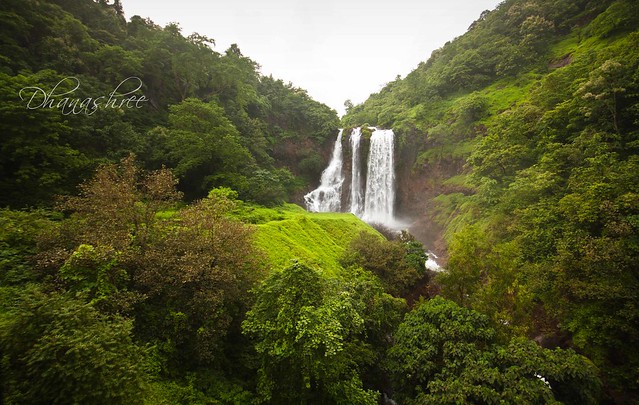
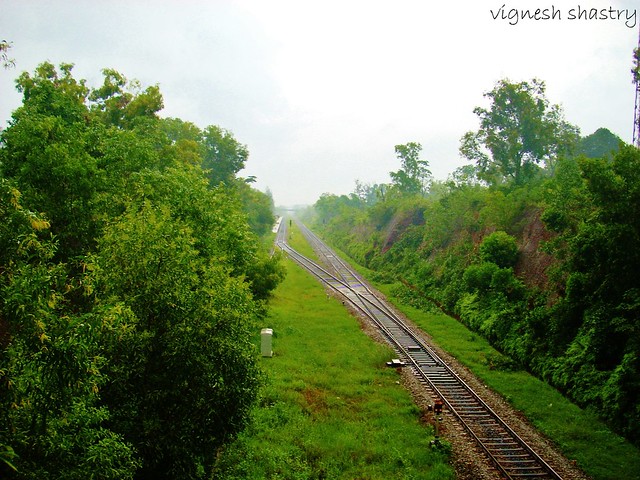
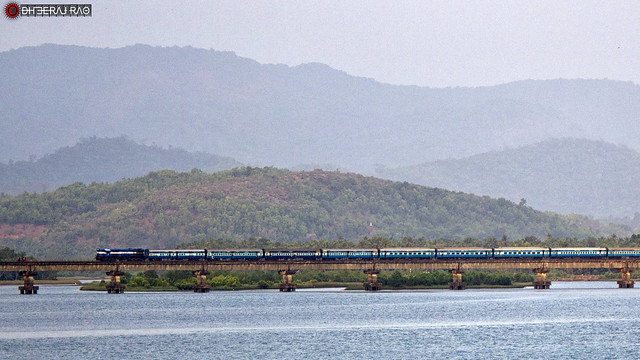


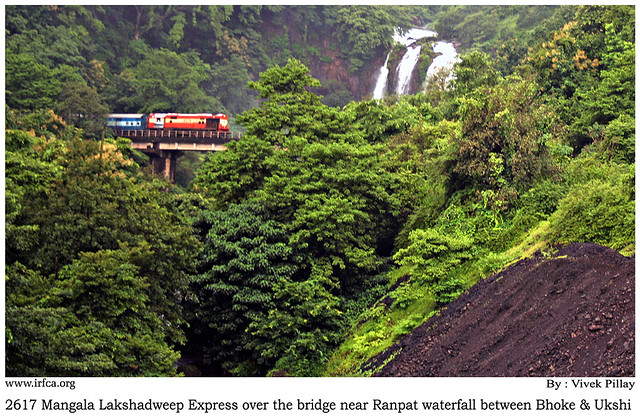
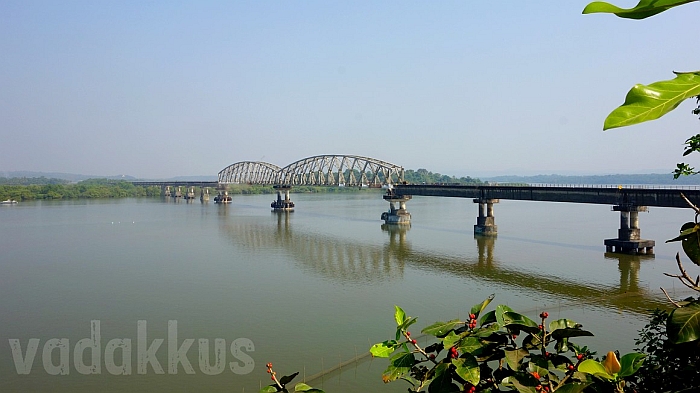
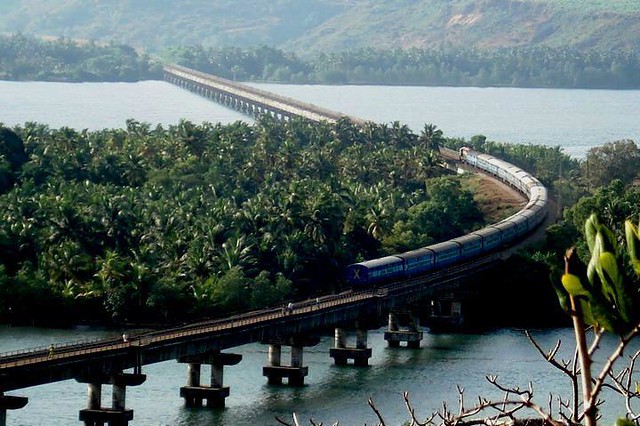
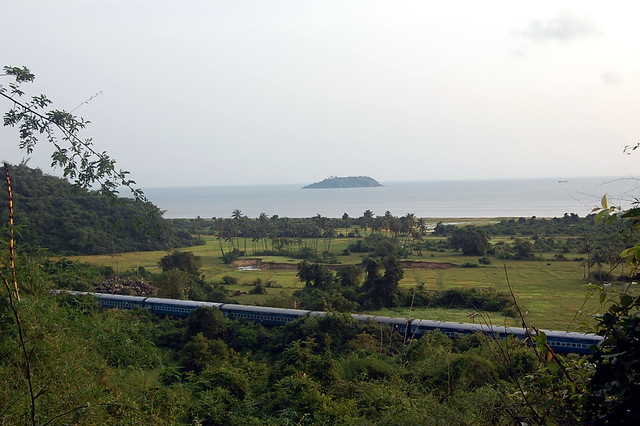
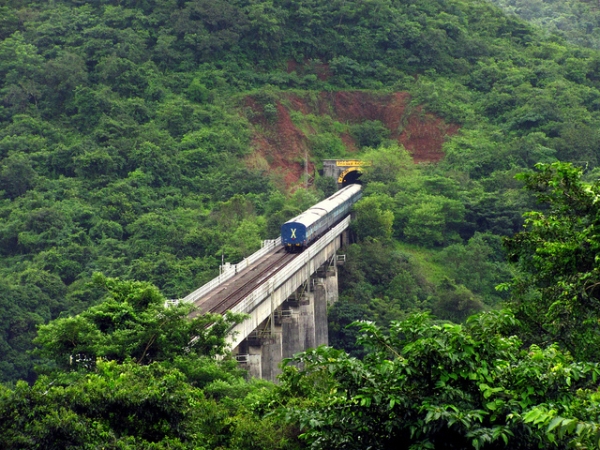
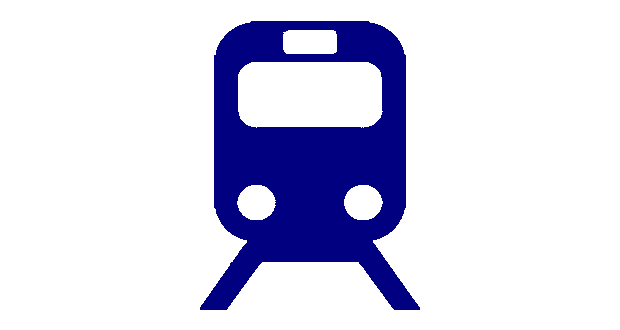

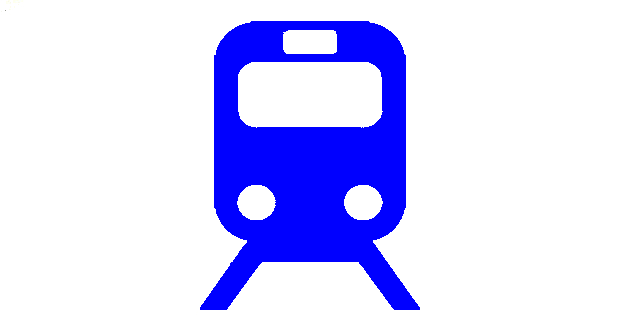

A rail journey through the scenic Konkan Railway is the Indian rail-fan’s ultimate dream.
KRCL should now embark on doubling the line to augment line capacity. This can be started simultaneously from 4 points viz from Panvel, Mangalore & Madgaon towards north & south. Also electrification can also be begun as Mr Chidambaram has promptly done away with subsidised diesel for bulk consumer like railways. Any further delay will lead to cost escalation.
The nation has sadly failed to support Dr. Sreedharan, the Metro Man of India for the post of President of India. Apart from Metro rail he also created Konkan Railways, surmounting
untold obstacles. He was an honest, incorruptible Technocrat whose honesty was
never appreciated by the system nor was he accorded those heights he deserved
for his talent and dedication. He
maintained International standards of excellence & efficiency, with not a
single instance of corruption.